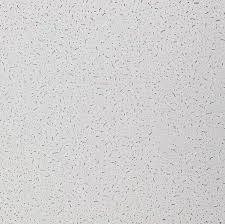Dec . 19, 2024 06:30 Back to list
Exploring the Benefits of Mineral Fiber Board Ceilings in Modern Interiors
Understanding Mineral Fiber Board Ceilings Advantages and Applications
Mineral fiber board ceilings, also known as acoustic ceilings or drop ceilings, have become a popular choice in both commercial and residential spaces. These versatile ceiling tiles are composed primarily of mineral fibers, which give them unique properties that cater to aesthetic and functional requirements in various building applications. This article delves into the essential features, advantages, and typical uses of mineral fiber board ceilings.
Composition and Characteristics
Mineral fiber boards are primarily made from natural or synthetic fibers combined with other materials, including starch and binders. This composition allows them to offer superior sound absorption, durability, and fire resistance. The fibers are often created from materials such as gypsum, clay, or recycled paper, making these ceilings an eco-friendly option.
One of the standout characteristics of mineral fiber ceilings is their acoustic performance. The porous structure of the tiles allows them to absorb sound, making them ideal for spaces where noise control is essential, such as offices, schools, hospitals, and auditoriums. Additionally, they come in various textures, sizes, and colors, providing design flexibility for architects and builders.
Advantages of Mineral Fiber Board Ceilings
1. Sound Absorption One of the most significant benefits of mineral fiber ceilings is their ability to control noise levels within a space. By minimizing echoes and reducing ambient noise, these ceilings contribute to a more comfortable and productive environment.
2. Fire Resistance Mineral fiber materials are inherently fire-resistant. In the event of a fire, mineral fiber board ceilings can help slow the spread of flames, providing critical time for occupants to evacuate and aiding firefighting efforts.
mineral fiber board ceiling

3. Easy Installation and Maintenance Mineral fiber board ceilings are usually installed in a suspended grid system, which allows for straightforward installation and maintenance. If a tile becomes damaged or stained, it can be easily replaced without disrupting the entire ceiling.
4. Energy Efficiency These ceilings can help in maintaining energy efficiency within a building. By improving insulation and reflecting light, they can aid in reducing heating and cooling costs.
5. Aesthetic Versatility Available in an array of colors, patterns, and textures, mineral fiber board ceilings can complement various interior design styles. Whether for a sleek modern office or a cozy residential setting, these tiles can enhance the overall aesthetic.
Typical Applications
Mineral fiber board ceilings are versatile enough to be used in an array of settings. Here are some common applications
- Commercial Offices They create a professional environment while controlling noise and improving productivity. - Educational Institutions In schools and colleges, these ceilings help reduce distractions and promote focus in learning environments. - Healthcare Facilities Hospitals and clinics benefit from the acoustic properties and hygiene standards of mineral fiber ceilings. - Retail Spaces Stores can enhance their branding through creative ceiling designs while controlling customer noise levels.
In conclusion, mineral fiber board ceilings offer a combination of sound absorption, fire resistance, and aesthetic flexibility that makes them a practical choice for various environments. As building design continues to prioritize acoustic comfort and environmental sustainability, the popularity of mineral fiber ceilings is likely to grow, making them a staple in modern construction and renovation projects. Whether for commercial, educational, or residential applications, these ceilings provide an effective solution for achieving both functional performance and decorative appeal.
-
Durable Ceiling T Grid Systems | Easy InstallationNewsAug.29,2025
-
PVC Gypsum Ceiling: Durable, Laminated Tiles for Modern SpacesNewsAug.28,2025
-
Pvc Gypsum Ceiling Is DurableNewsAug.21,2025
-
Mineral Fiber Board Is DurableNewsAug.21,2025
-
Ceiling Tile Clip Reusable DesignNewsAug.21,2025
-
Ceiling T Grid Modular DesignNewsAug.21,2025







